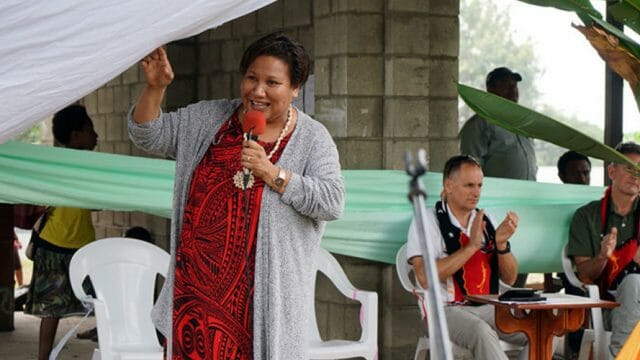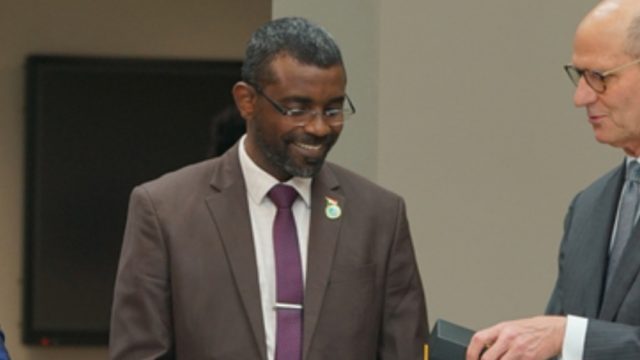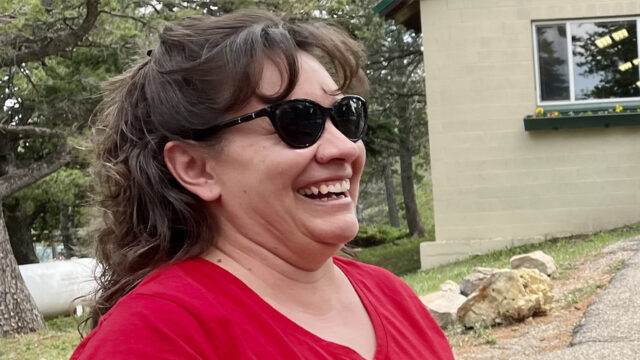Origins Museum of Nature is a new mission outreach, Adventist leaders say.
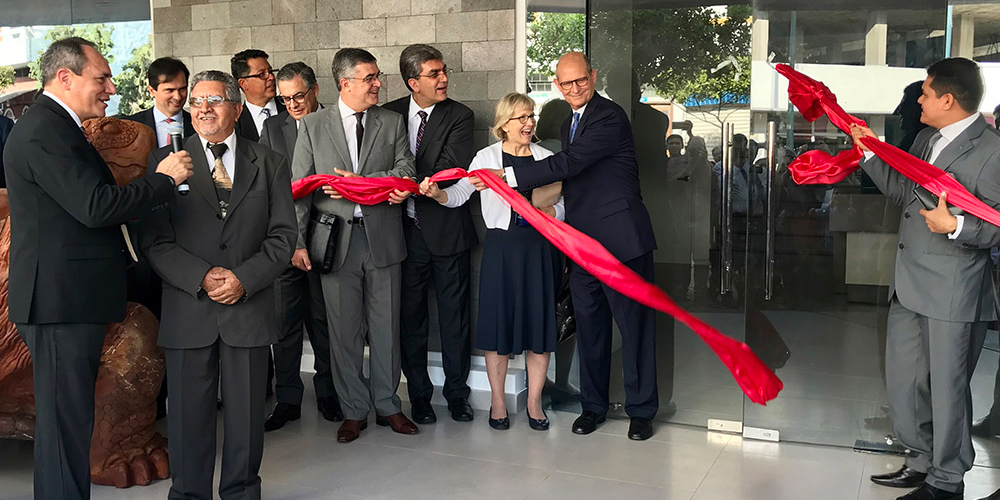
In the 1970s, a Seventh-day Adventist biology professor acquired prime land on the Galápagos Islands, which are part of Ecuador, to open a field station for students of Loma Linda University in California, United States.
Nearly 50 years later, hundreds of people descended on the site to celebrate the opening of a landmark museum and research center, where tourists and scientists alike can explore the origins of the earth with state-of-the-art technology.
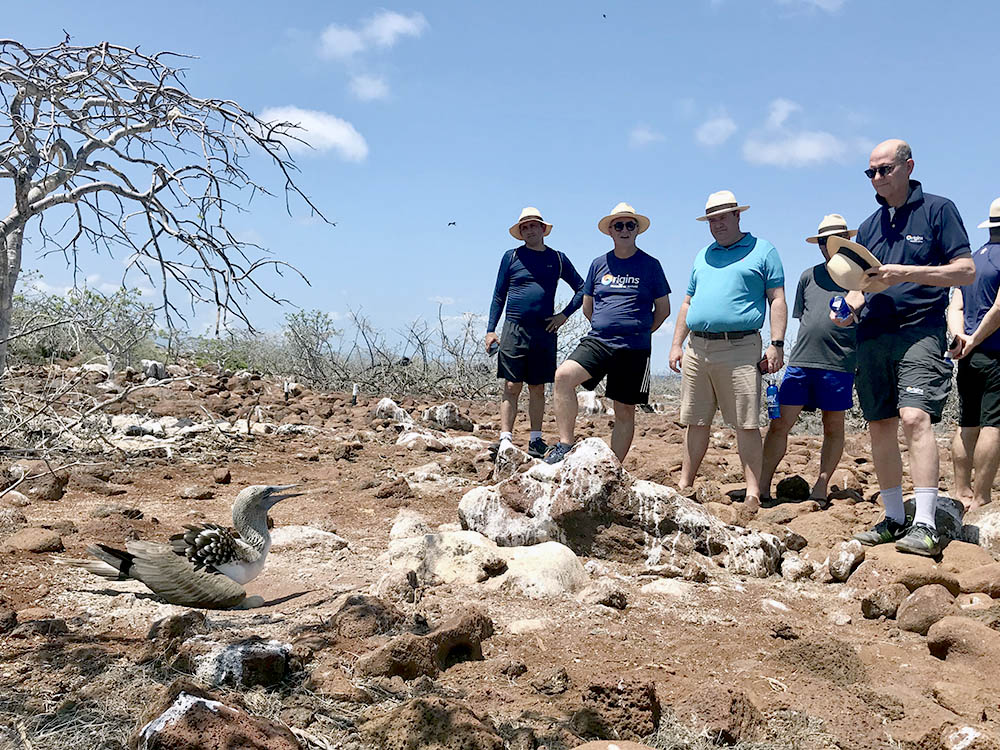
The Origins Museum of Nature, located on the main Charles Darwin Avenue in Puerto Ayora, the tourist hub of the Galápagos, combines touchscreen televisions and virtual-reality headsets with fossils and giant tortoise shells to offer visitors an interactive experience where they can study the rich natural history of the legendary Pacific islands. Away from the exhibit hall, two museum rooms have been dedicated to scientific research.
“As Seventh-day Adventists, the source of our understanding of our origins, our reason for being here, and our purpose in helping nature to be preserved are found in our relationship with God,” Adventist Church president Ted N. C. Wilson told a packed hall of scientists, government officials, and church members at the inauguration of the museum on the evening of February 29, 2020.
“May many people come to know more about origins and God through this museum,” he said.

The Origins museum received a warm welcome from government leaders and scientists at the inauguration.
The vice mayor of Puerto Ayora thanked the Adventist Church for opening the museum and predicted that many visitors would view its exhibits. The Ecuadorian government estimates that each year, a quarter-million tourists visit the Galápagos Islands, located about 600 miles (1,000 kilometers) off the coast of Ecuador. Tourists primarily flock to Santa Cruz Island, where the museum is located, but they also go to San Cristobal Island, situated about 60 miles (100 kilometers) away.
A group of invited scientists, including the director of the Charles Darwin Research Station, which promotes conservation and biodiversity on Galápagos, praised the museum for encouraging environmental stewardship.
The museum also made national headlines, with Ecuador’s largest newspaper, El Universo, publishing a March 2 report with three photos.
A Plot of Miracle Land
The museum is located on land that the late biology professor Lester E. Harris Jr. acquired on behalf of Loma Linda University nearly a half-century ago. Hoping to somehow obtain land for a field station for Adventist students, Harris was traveling by plane to the Galápagos when he struck up a conversation with his seatmate. It turned out that his seatmate was flying to the Galápagos in the hope of somehow selling a piece of land. The seatmate agreed to sell the land to Harris by the time the airplane landed at the Balta Island airport, which serves Puerto Ayora.
“I would say it really was providential,” said Bill Hayes, a biology professor at Loma Linda University, who related the miracle story in an interview. He represented the university at the museum opening.
Loma Linda University closed the field station in the 1980s and donated the land to the Adventist Church. Today, the 12-grade Loma Linda Adventist School is located adjacent to the museum, and it has 271 students on two campuses.
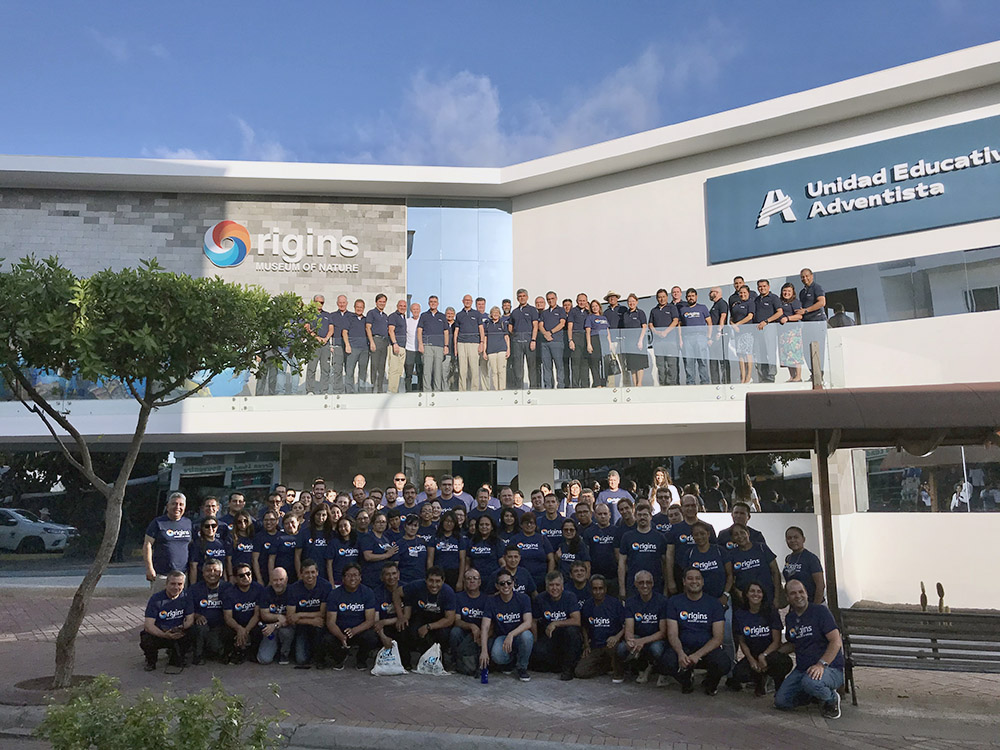
Harris, a renowned biologist who taught at La Sierra University and Washington Adventist University, died in 2012 at the age of 89. He co-founded the field station with Ernest Booth, a professor who started the undergraduate and graduate biology programs at Walla Walla University and later taught at Loma Linda University. Booth died in 1984.
New Category of Outreach
The Origins museum marks a milestone in the Adventist Church’s efforts to assist people to live better lives physically, mentally, socially, and spiritually through “urban centers of influence.” The church operates hundreds of urban centers of influence around the world, including bookstores, fitness clubs, and community centers with language lessons and healthy cooking classes. Origins, however, is the church’s first foray into a high-technology museum.
“This is one of a kind. It’s a completely new category,” said Magdiel Perez Schulz, assistant to the General Conference president, who has worked closely with a number of urban centers of influence.
A second urban center of influence also was opened during Wilson’s visit to the Galápagos: a ground-floor community center offering children’s drawing courses and healthy cooking classes in the newly refurbished and expanded San Cristobal Seventh-day Adventist Church on San Cristobal Island.
In the church sanctuary above the community center, Wilson, on February 28, presented a commemoration plaque to 80-year-old Aracely Guevara, who, with her late husband, Angel, were the first Adventists in the Galápagos. The couple, public schoolteachers, sensed a call from God to go to the islands in 1968 and asked the government to send them there to work, the Review and Herald magazine (now Adventist Review) reported in its issue dated July 17, 1969. Through Bible studies, prayer, and fasting, the couple saw the first 13 people baptized in about four months. Today the church has 60 members, and the enlarged upstairs sanctuary has 120 seats.
Multiple church entities contributed to both urban centers in the Galápagos. The San Cristobal project received special assistance from the South American Spanish Publishing House (ACES) in Argentina, which provided funding as well as manpower. On the other island, funding for the $1 million complex, which houses the Origins museum on the ground floor and Central Santa Cruz Seventh-day Adventist Church on the next floor, included the General Conference, the South American Division (SAD), the South American branch of Adventist Risk Management, and a special Sabbath offering collected across South America.
Washington Yanez, president of the South Ecuador Mission, whose territory includes the Galápagos, expressed special gratitude to volunteers who helped complete the complex.
“They worked day and night,” he said at the museum inauguration. “Their work was for God.”
Invitation to Think
In an interview, SAD president Erton Kölher described the Origins museum as “an invitation to think about something different.”
“Our idea is not to confront people who think differently but to show them some viewpoints that perhaps they haven’t seen,” he said. “After visiting, they might start to realize that a special hand must be behind the processes of nature.”
L. James Gibson, a scientist and director of the Adventist Church’s California-based Geoscience Research Institute, noted that conservation is a hot topic among scientists in the Galápagos, and he voiced hope that the museum’s research center might provide an opportunity to connect care for the environment to the Creation story.
“It’s a great strategy, I think, for reaching people who might not at all be open to something that says, ‘This is a creation museum,’” said Gibson, who also chairs the Adventist Church’s Faith and Science Council, which contributed funding to the project. “It can attract the thoughtful person by saying, ‘You see, creationists are interested in caring for the environment.’ There is a point of contact there that we can work on and explore.”
The museum upholds the redemptive philosophy of Adventist education, which seeks to restore people into the image of their Creator, said Lisa Beardsley-Hardy, director of the General Conference’s education department, which also contributed to the project.
“What I love about this museum is that it is taking the philosophy of Adventist education and packaging it in such a way that the postmodern mind, which is drawn by stories, which is so media savvy, can understand,” said Beardsley-Hardy, who also supported the museum by helping paint its walls. “It’s apologetics for a new generation.”
The original version of this story was posted on the Adventist Mission news site.


